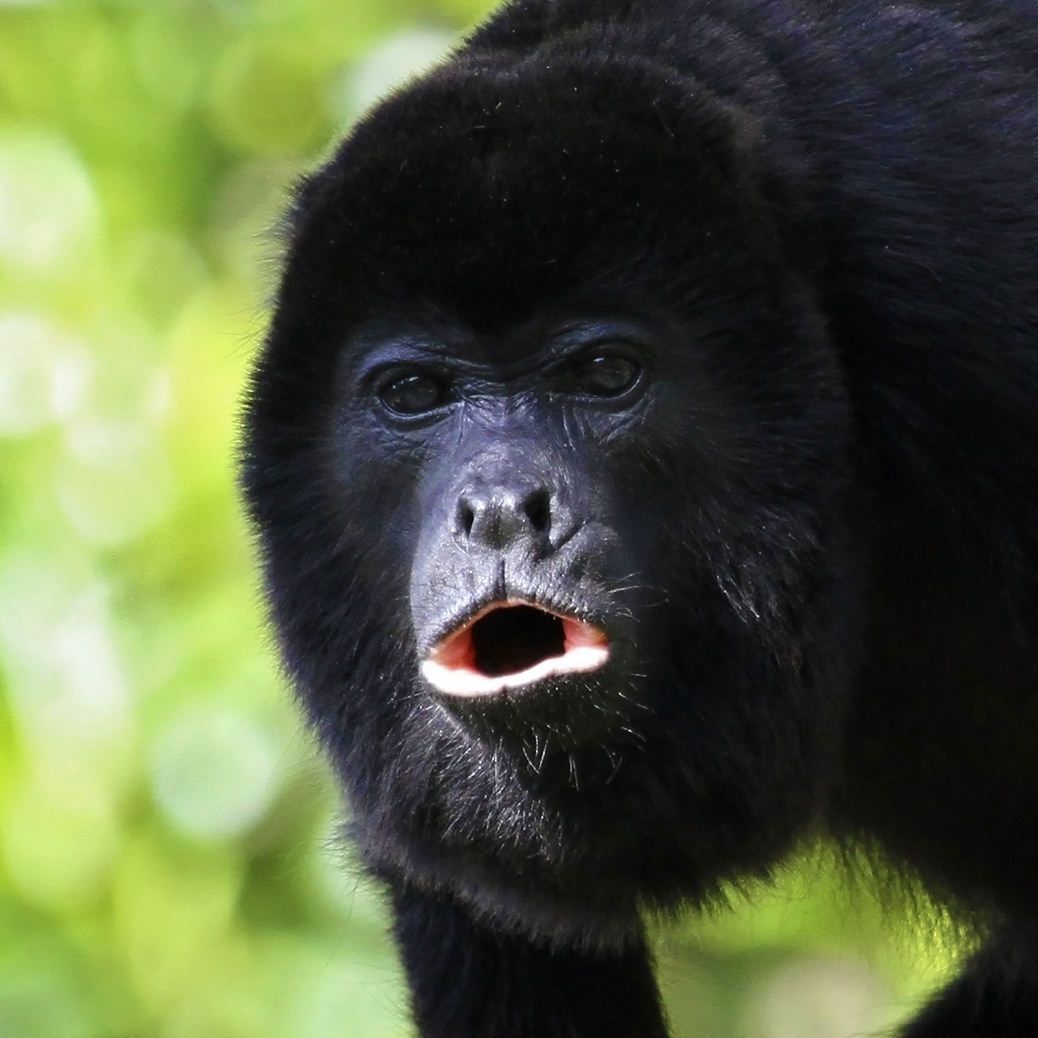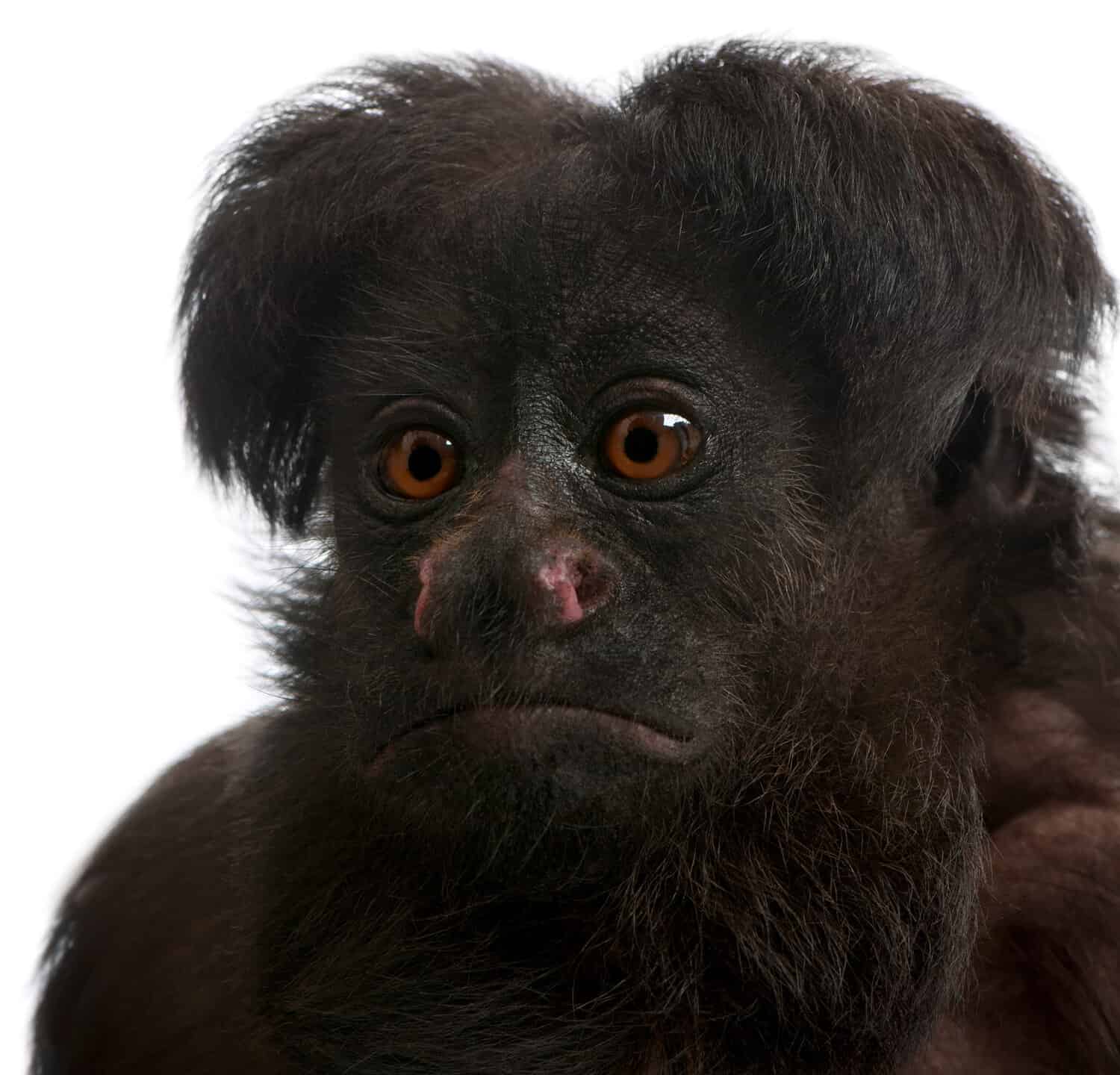Is the world of primates as diverse and mysterious as the dense forests they inhabit? The answer, in a word, is yes, and the journey into their world reveals a spectrum of adaptations, social structures, and evolutionary paths as varied as the habitats they call home.
Imagine a scene played out along a tranquil riverbank. The sun casts long shadows as a regal figure, the Monkey King, enjoys a leisurely afternoon amble. But his serenity is shattered. He looks over his "hairy shoulder," as the narrative so colorfully puts it, and spots a sight that disrupts his peace: the blackest monkey he's ever laid eyes upon, dogging his steps.
"Why do you follow me?" the Monkey King demands, his displeasure evident. Uninvited followers, especially during a contemplative riverbank stroll, are clearly not welcome. The stage is set for an exploration of the primate world, where the shades of black and the intricacies of social dynamics intertwine.
Consider the black howler monkey, known in Belize as the "baboon." This creature faces a grim reality: it's endangered throughout much of its range, a consequence of hunting and habitat destruction. As forests fall to the relentless march of human progress, the howlers, which require several acres of forest per troop to survive, find themselves increasingly rare. This stark reminder highlights the fragility of the ecosystems and the urgent need for conservation efforts.
Delving deeper into the world of primates, we find the Amazon black howler monkey (Alouatta nigerrima), often referred to as the "black howler." As its name suggests, this is a species of howler monkey, a member of the Atelidae family of Latin American monkeys. Another species within this family, Alouatta caraya, holds the distinction of being the largest of the New World monkeys. These primates exhibit remarkable adaptability, using their prehensile tails, acting as extra limbs, to navigate their arboreal habitats, gripping branches with ease.
Family groups are relatively small, typically comprising up to eight members. What sets howler monkeys apart is their prehensile tails, which serve as an extra limb, allowing them to grasp branches and pick up objects with remarkable dexterity. A unique feature of these primates is the naked patch under the tip of their tails, complete with ridges and grooves that are specific to each individual, enhancing their grip.
Howler monkeys also claim the title of the loudest primates in the Americas. The males do most of the howling, their calls echoing through the forests and across water bodies. These calls can be heard from impressive distances: up to 1.8 miles within the forest and up to 3 miles over water. They are found in the Amazonian and Madeiran forests of Peru, Brazil, and Bolivia.
While these primates consume more leaves than any other New World monkey, their stomachs are not specialized to process this type of diet. The male howler monkey can range from 15 to 22 pounds, whereas the female weighs around 12 pounds, making them 75% smaller than the male. A further fascinating aspect is the sexual dimorphism exhibited by the black howler monkeys, as males and females display distinct physical differences.
| Feature | Details |
|---|---|
| Species | Alouatta caraya (Black Howler Monkey) |
| Also Known As | Black Howler, Caraya Howler |
| Size | Males: 32 pounds (approx.), Females: 16 pounds (approx.) |
| Sexual Dimorphism | Males: Black fur; Females: Blond fur |
| Habitat | All kinds of forests throughout central South America. |
| Diet | Leaves, fruit, seeds, bark, and flowers |
| Vocalization | Loud howling, primarily by males, can be heard up to 3 miles. |
| Social Structure | Small family groups, up to eight members. |
| Tail | Prehensile, used for grasping and climbing. |
| Conservation Status | Vulnerable (IUCN Red List) - Note that the specific status may vary depending on the sub-species and location. |
| Interesting Fact | The species practices allomothering, where other females help care for babies that are not their own. |
| Reference | IUCN Red List of Threatened Species |
At birth, both sexes are blond. However, as males mature, their coats gradually change to black, typically around the age of two. A male black howler monkey's larger hyoid bone is another example of sexual dimorphism. This bone plays a crucial role in their unique howling vocalizations.
Stepping beyond the Amazon, the Roloway monkey, a member of the Old World monkey group, resides in tropical West Africa. These arboreal primates spend their lives in the trees, using branches to move. In the southern reaches of their geographic range, they can be seen at high montane environments at elevations up to 10,990 feet (3350 m). Even the Yucatan black howler monkey, known for its adaptability, can survive in secondary forests impacted by human activities, as opposed to needing just primary forests.
It is also worth noting that the black howler monkey practices allomothering, where other females carry, nurse, and protect babies that are not their own.
The quest to identify the "blackest monkey alive" leads us to the striking black colobus, a primate distinguished by its striking, almost entirely black fur. While other species, such as the black howler monkey and the black spider monkey, share this trait, the black colobus arguably holds the title, due to its lack of.
The Smithsonian's National Zoo, a free attraction in Washington D.C., is a popular destination, attracting over 2 million visitors annually. It aims to instill a lifelong commitment to conservation through engaging experiences with animals and the people working to save them.
The black howler monkey exhibits a noticeably big neck and lower jaw with huge vocal cords, which enable it to produce its distinctive howl. As the largest new world monkey, this primate is also the largest monkey in the rainforests of Latin America.
The Southern black howler monkeys hold the distinction of being the largest monkeys in Latin American rainforests. These primates are sexually dimorphic, and males weigh around 32 pounds, while females weigh around 16 pounds. Their diet comprises leaves, fruit, seeds, bark, and flowers, and they inhabit various forest types throughout central South America.
The question lingers: "Have you ever been to the end of the world before, my king?" The blackest monkey's query is met with a poignant admission of ignorance: "No, I have not." The response from the dark primate? "There is my reason to go where you go, be where you be, my king," the blackest monkey concludes in a voice as "worm as welcoming as death." Is this a reference to something? Is it a question, or the statement is just to emphasize the unique relationship between two?
The crested black macaque, an unusual monkey, resides in the rainforests of Indonesia, specifically on the island of Sulawesi. The world of primates is as diverse and mysterious as the dense forests they inhabit. These striking black primates first caught attention.
In essence, the narrative underscores the intricate relationships within the primate world. The journey highlights the importance of conservation, as well as the complexity and diversity of the primate world, reminding us of the interconnectedness of species and their environments.


